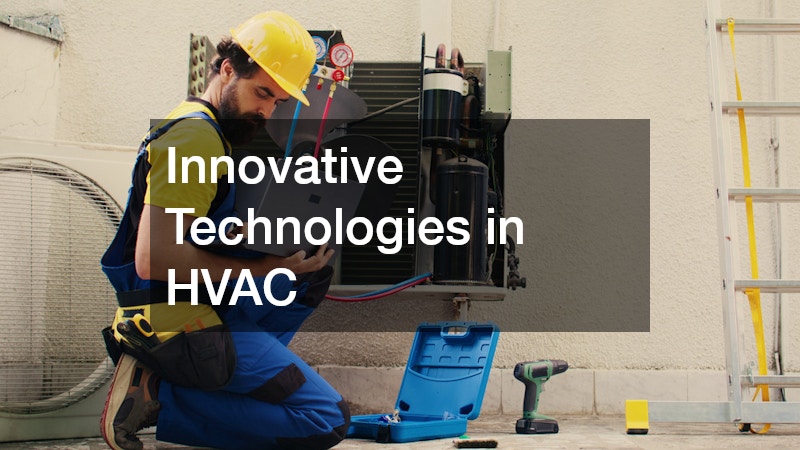In today’s rapidly evolving marketplace, the demand for Heating, Ventilation, and Air Conditioning (HVAC) services continues its upward trajectory, opening lucrative opportunities for businesses in the field. As global temperatures fluctuate and with an increasing awareness of sustainable living, the necessity of efficient HVAC systems grows. For entrepreneurs and established companies alike, understanding the nuances of the HVAC business is crucial not only for survival but for long-term success and growth. This comprehensive guide aims to explore the essential strategies for growing an HVAC business, equipping you with actionable insights drawn from industry experts and market trends.
Understanding the HVAC Market
The HVAC market is characterized by its diverse and ever-changing nature, impacted by various factors ranging from climate change to technological advancements. Understanding consumer demand is pivotal for any business aiming to carve out a niche in this competitive arena. Analyzing demographic trends, specifically in urban growth areas, can provide invaluable insights into where the demand for HVAC services is highest. Moreover, the market’s seasonal nature requires businesses to strategically plan their operations to capitalize on peak demand periods. Environmental regulations, pushing for energy efficiency, further shape the market by encouraging innovation in products and services.
Technological advancements in HVAC systems have introduced a range of smart and energy-efficient solutions, setting new standards for consumer expectations. Companies must stay ahead by continuously upgrading their offerings to include these modern technologies. Customers are increasingly looking for systems that not only enhance comfort but also incorporate energy savings and green technologies. By offering cutting-edge solutions, HVAC businesses can differentiate themselves and cater to a tech-savvy clientele. As a result, investing in research and development becomes critical to maintain competitiveness and relevance in the market.
Key Strategies for Growth
Strategizing for growth in the HVAC business requires a multifaceted approach, balancing customer acquisition, technological adoption, and operational excellence. Building a strong brand presence through effective marketing, both online and offline, is essential to attract new customers and retain existing ones. Leveraging social media platforms and search engine optimization (SEO) with targeted keywords like “HVAC business” can significantly boost visibility. Implementing customer loyalty programs and referral incentives can also help sustain a loyal client base. Additionally, attending trade shows and networking events provides opportunities for brand promotion and expansion of professional networks.
Another crucial aspect of growth is developing a skilled workforce equipped with the latest industry knowledge and capabilities. Investing in employee training and certifications ensures that the team is proficient in modern HVAC technologies and best practices. Offering competitive wages and benefits can attract skilled professionals and reduce turnover rates, contributing to workforce stability. Creating a culture of continuous improvement encourages employees to stay updated with industry trends and advancements. An adept team not only enhances service quality but also fortifies a business’s reputation in a competitive market.
Innovative Technologies in HVAC
The infusion of technology into the HVAC sector is paving the way for smarter, more efficient solutions that align with consumer demand for comfort and sustainability. One of the significant trends is the incorporation of Artificial Intelligence (AI) to enhance system efficiency and predictive maintenance. AI algorithms can analyze data from various sensors to optimize energy use and preemptively identify potential malfunctions, reducing system downtime. Integrating AI into HVAC systems results in cost savings for consumers and increases the lifespan of equipment, providing a compelling value proposition. Additionally, AI-driven analytics can offer insights into improving overall energy consumption patterns.
Renewable energy technologies, such as solar and geothermal, are increasingly being integrated into HVAC systems to promote eco-friendly solutions. These technologies harness natural resources to provide heating and cooling with minimal environmental impact. HVAC businesses that adopt and promote renewable energy solutions can align themselves with sustainability goals, attracting environmentally conscious consumers. Furthermore, offering solar-powered options or geothermal systems diversifies product offerings and opens new revenue streams. Embracing green technologies not only supports environmental initiatives but also meets the growing demand for sustainable living solutions.
Another transformative technological advance is the development of IoT-enabled devices, which facilitate seamless communication between HVAC systems and other smart home technologies. These interconnected systems improve user convenience and operational efficiency by allowing remote monitoring and control. IoT devices also enable users to receive real-time updates on system performance, aiding in diagnostics and maintenance. HVAC companies that integrate IoT solutions can offer superior customer experiences and foster long-term relationships. The ability to collect and analyze data through IoT further enables businesses to tailor their services to customer preferences, driving innovation and growth.



